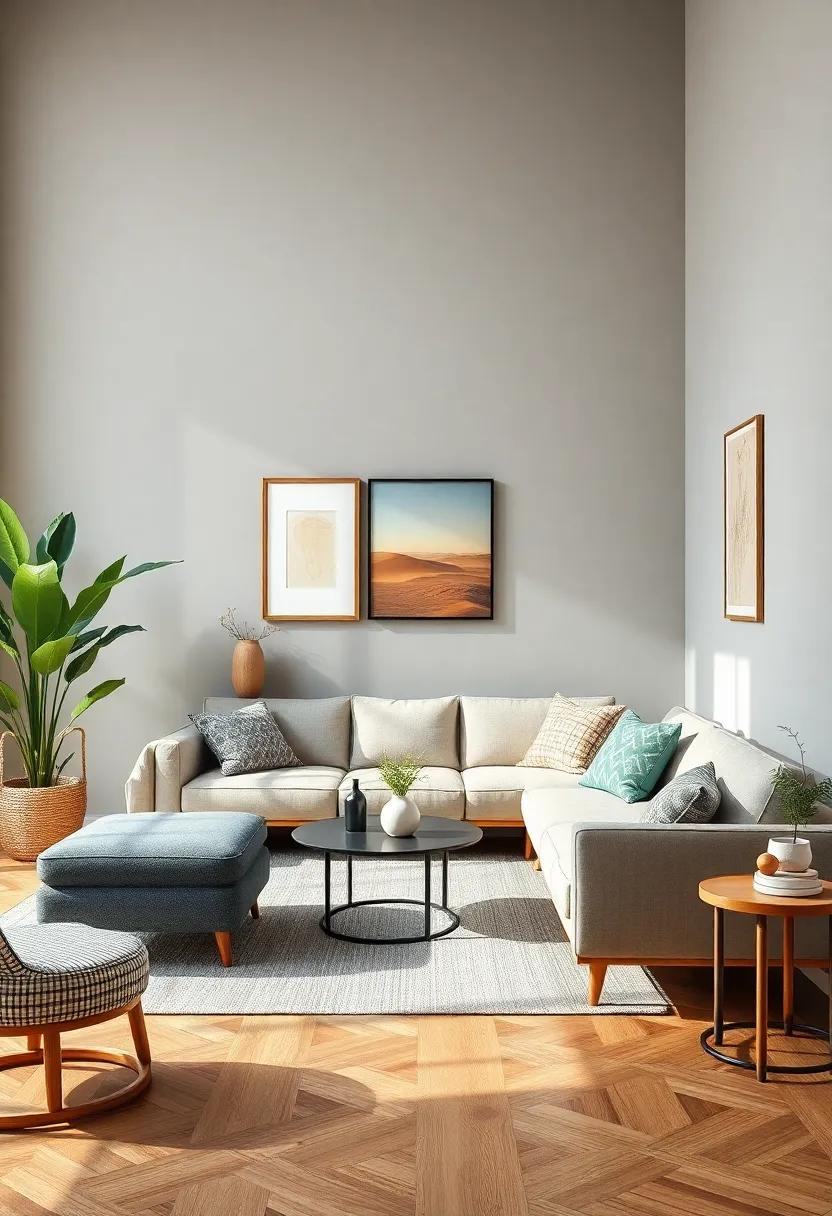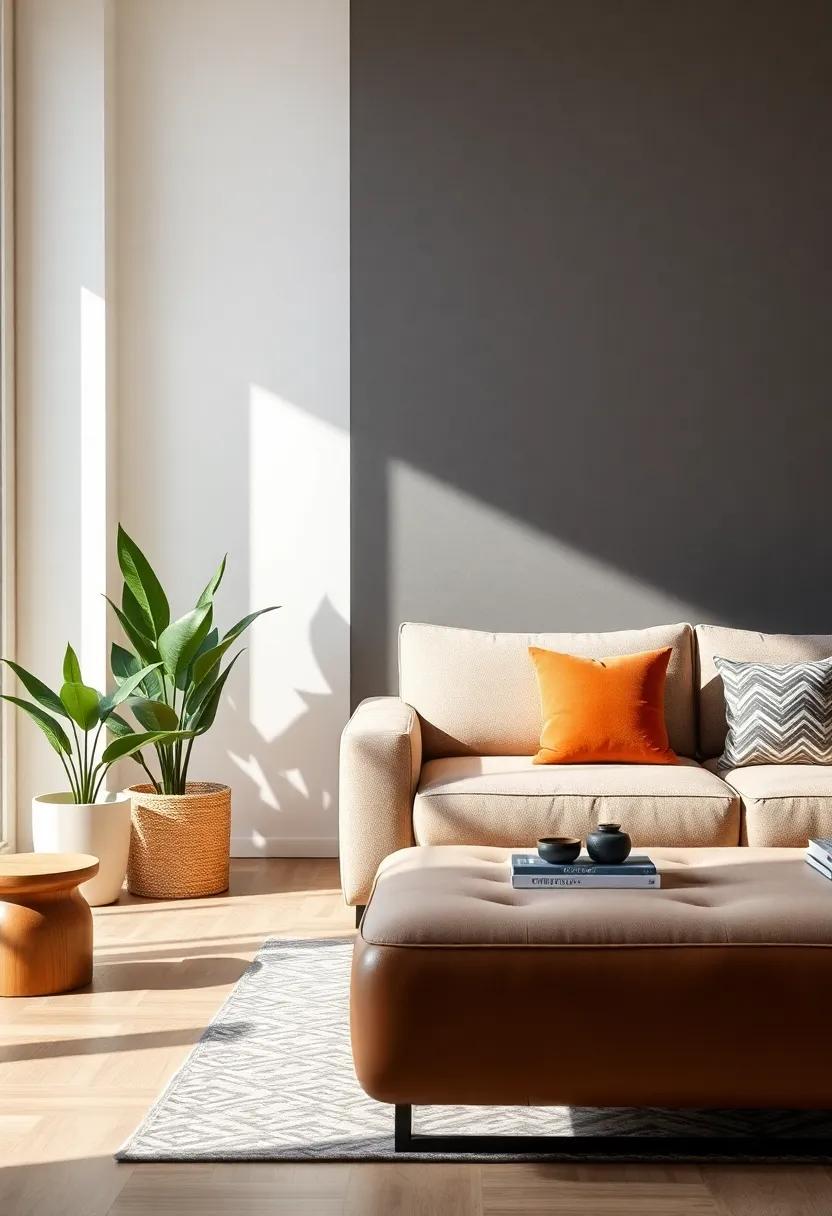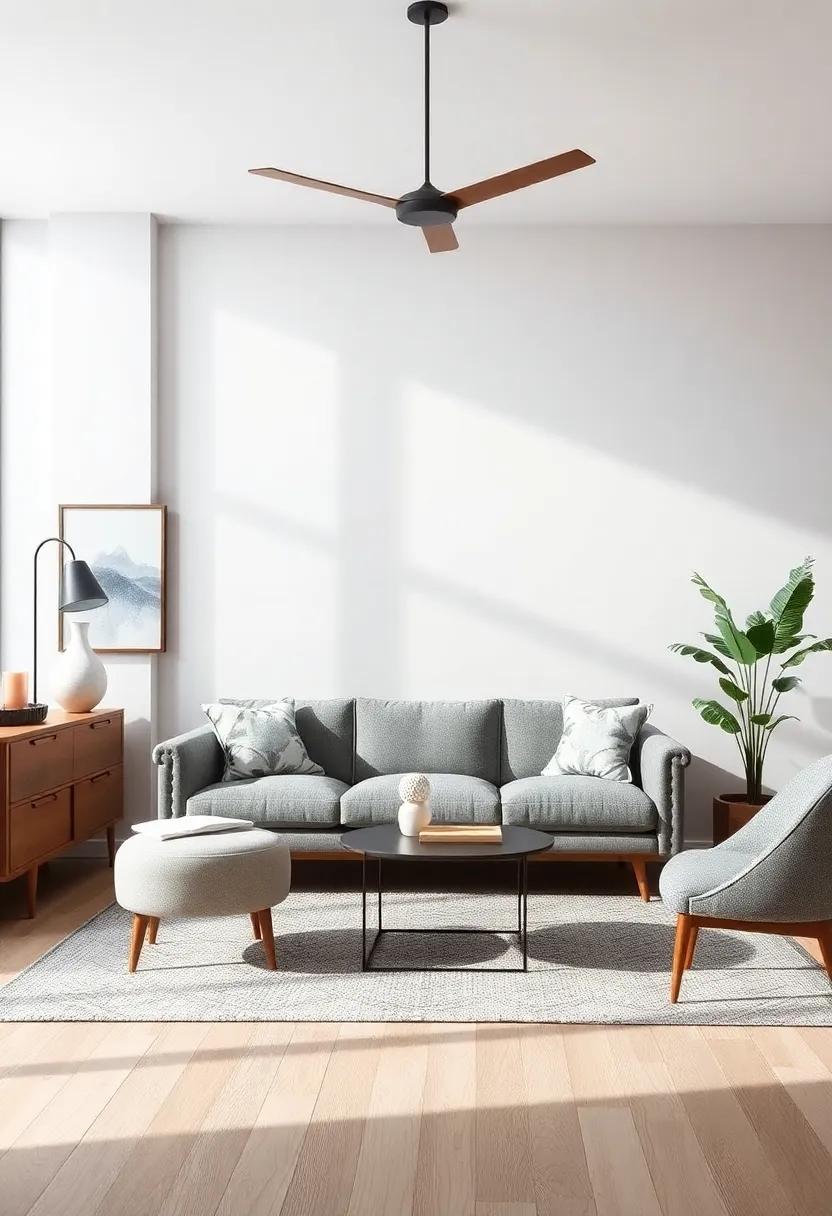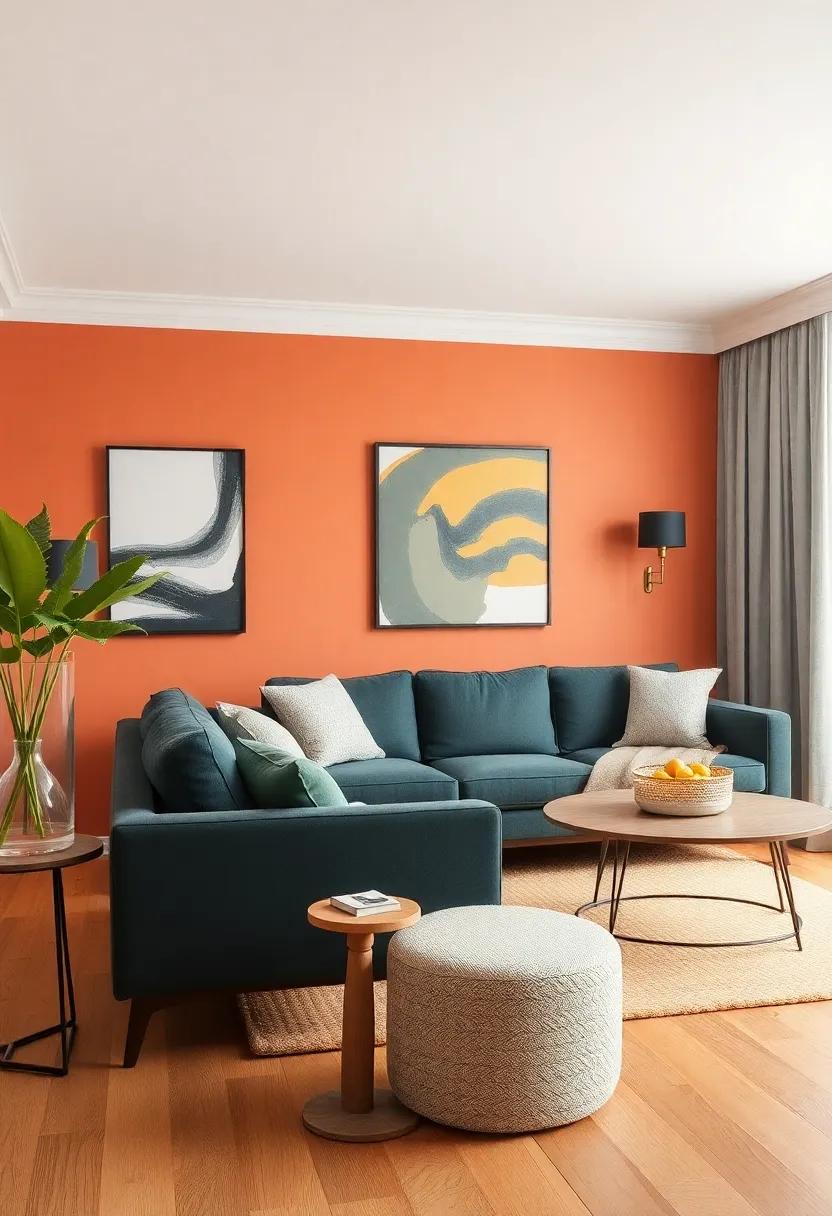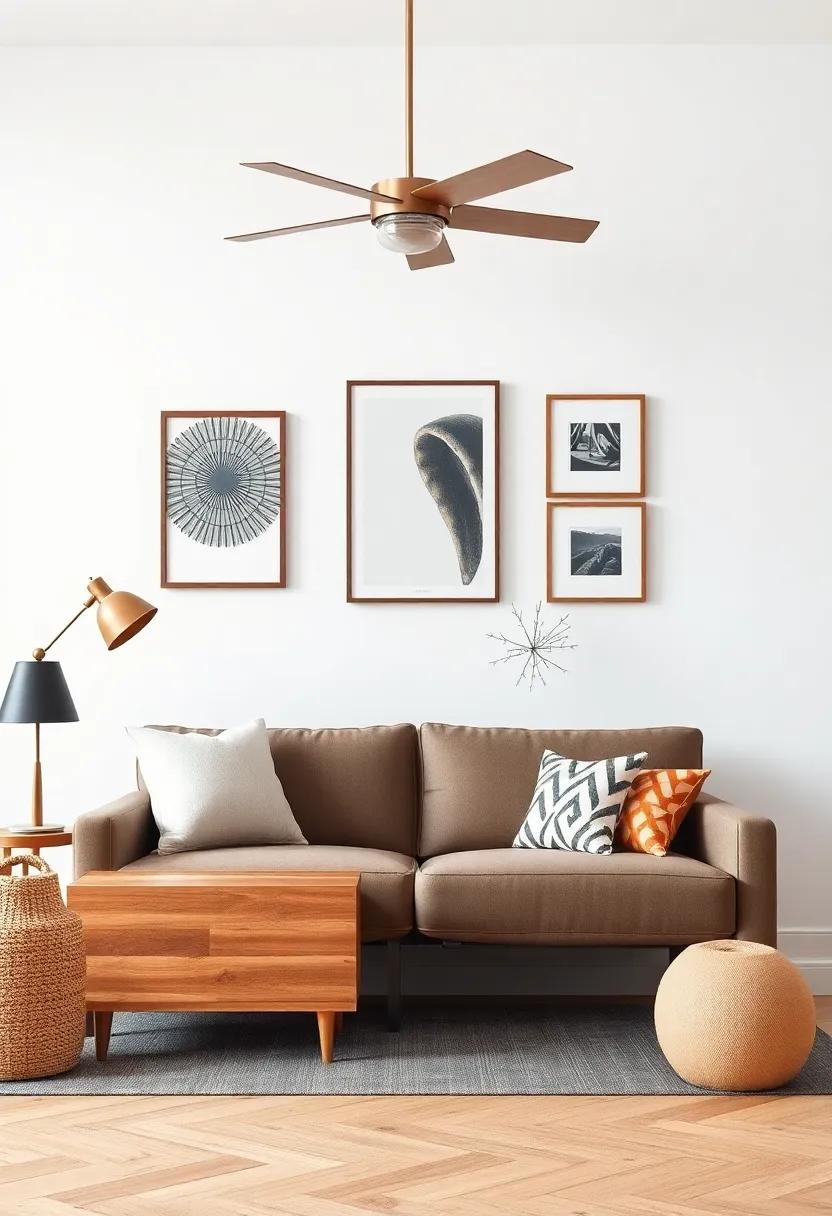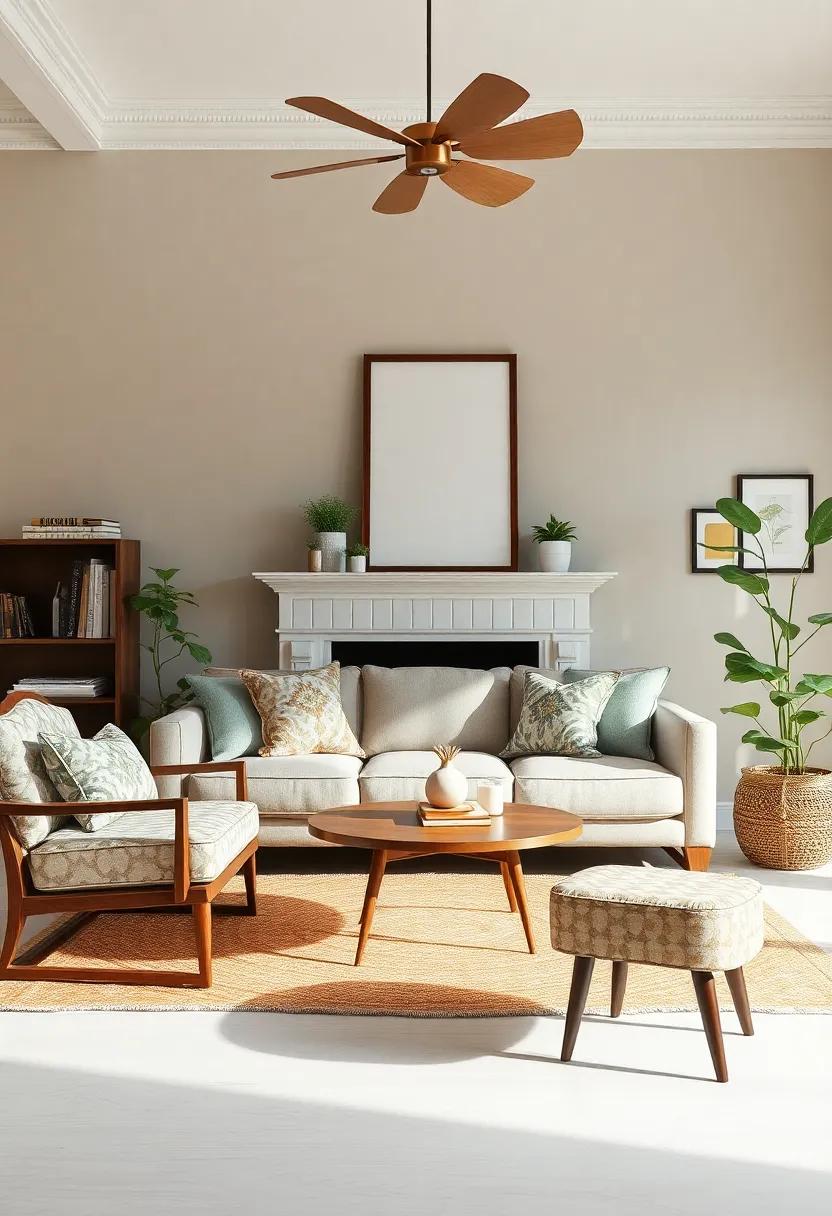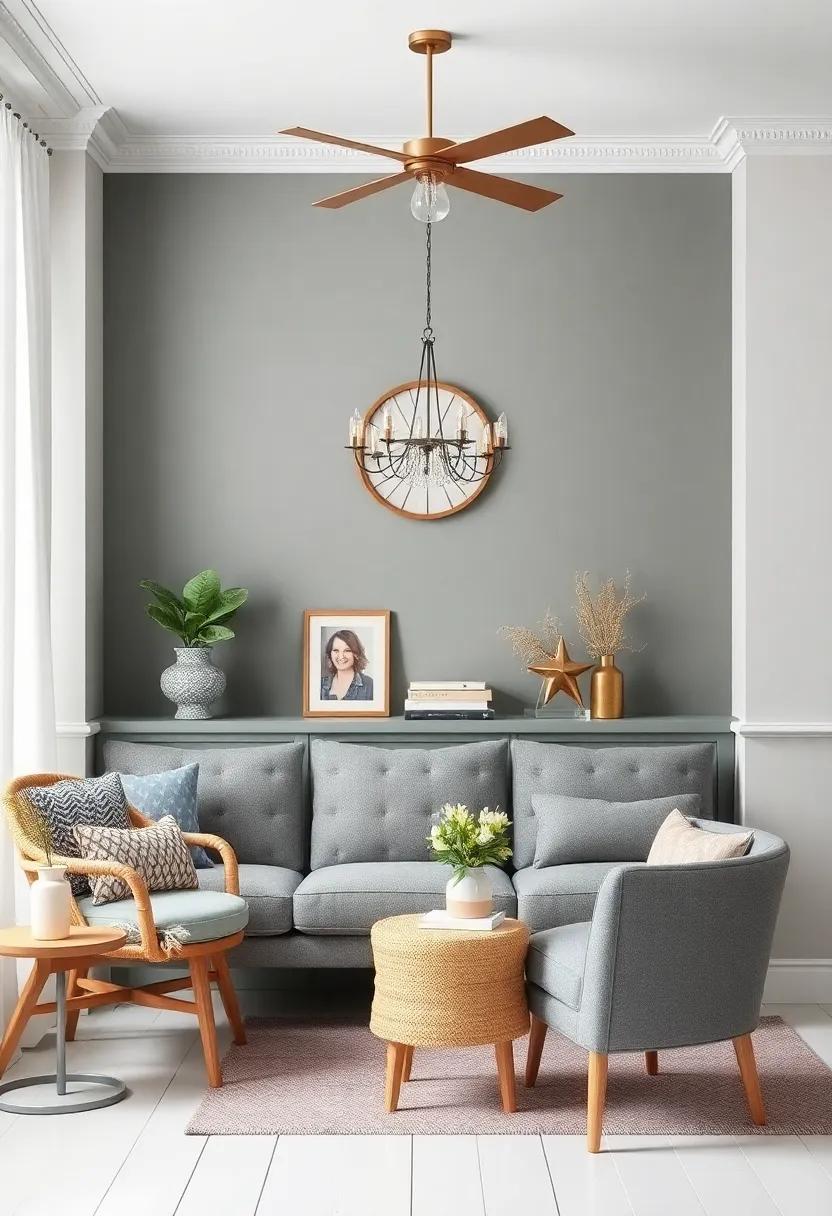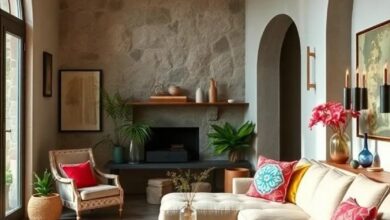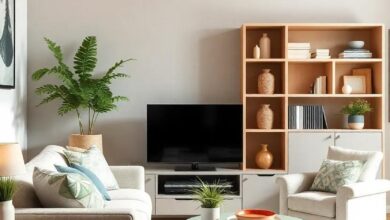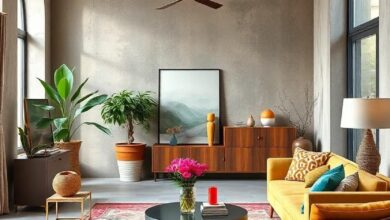
Mastering the Art of Unity: Balancing Eclectic Furniture Styles in One Space
In an era where individual expression is cherished, the art of blending diverse furniture styles within a single space has emerged as a captivating challenge.The seamless integration of eclectic pieces not only enriches a room’s aesthetic but also tells a unique story—one that reflects the personality and tastes of its inhabitants. Yet, achieving this delicate balance requires more than just a keen eye for design; it demands an understanding of harmony, proportion, and the interplay of textures and colors. In this article, we delve into the principles of mastering this intricate art, offering insights and practical tips for creating a cohesive environment that celebrates variety while maintaining a sense of unity. Whether you’re a seasoned decorator or a novice enthusiast, the journey towards unifying eclectic furniture styles promises to elevate your space and inspire your creativity.
Exploring the harmony of Divergent Furniture Styles in a Unified Space
Blending diverse furniture styles can transform a mundane space into a visual symphony, showcasing the beauty of contrast. By strategically incorporating elements from various design categories, such as Mid-Century Modern, Rustic, and Industrial, you can create an environment that feels both intentional and dynamic. Emphasizing color palettes and material harmony is essential; as a notable example, pairing a sleek leather sofa with reclaimed wood accents can yield an inviting yet complex aesthetic. It’s about finding common threads that tie these styles together—whether through shared colors, textures, or forms that allow even the most disparate pieces to coexist.
To achieve a cohesive look amidst the chaos of styles, one should consider a few key strategies:
- Focus on a Color Scheme: Create unity with a defined palette that echoes throughout the space.
- Balance Proportions: Mix larger statement pieces with smaller, delicate items to maintain an equilibrium.
- Incorporate Artistic Elements: Use artwork and décor that reflect a blend of styles to bridge the gap between different furniture pieces.
When done thoughtfully, the juxtaposition of different styles not only tells a story but also enhances the overall character of the room. You can establish a nuanced dialog between the distinct elements, inviting both intrigue and comfort for those who inhabit the space.
Crafting a Cohesive Narrative Through Color Palette Selection
When crafting a cohesive narrative in a space with eclectic furniture styles, the selection of a color palette serves as the unifying thread that binds various elements together. A thoughtfully chosen color scheme can create a harmonious flow, ensuring that each unique piece complements rather than competes with its neighbors. To achieve this, consider adopting a strategy that incorporates:
- Base Colors: These should be neutral tones that establish a foundation for your space.
- Accent Colors: Use bolder tones sparingly to add visual interest without overwhelming the senses.
- Transitional hues: Colors that bridge the gap between different furniture styles can foster a sense of continuity.
Once you have your colors laid out, the next step is to apply them across different elements—including textiles, accessories, and wall treatments. This interlacing of color will help create a seamless environment where each piece of furniture feels as if it belongs. A simple table showcasing your chosen colors can help you visualize the connections:
| Furniture Style | Color Palette |
|---|---|
| mid-Century Modern | Teal, Mustard, Walnut |
| Industrial | Charcoal, Rust, Olive |
| Bohemian | Coral, Indigo, Earth tones |
By strategically weaving colors throughout your space, you can enhance the overall aesthetic while allowing for a dynamic and inviting atmosphere that celebrates the beauty of eclecticism. This approach not only elevates the emotional experience of the room but also pays homage to the diverse history and characteristics of each furniture style.
Flowing Connections: The Role of Space Planning in Mixed Styles
In the realm of interior design, the way we organize our spaces holds the key to nurturing harmonious connections between diverse styles. Effective space planning helps in establishing visual flow that binds together an eclectic array of furniture, creating a cohesive narrative throughout the room. elements such as focal points, pathways, and functional areas should be thoughtfully conceived to guide the eye and enhance the overall ambiance. Consider the following strategies:
- Define Zones: Use rugs or furniture arrangements to delineate different areas,making distinct styles work together seamlessly.
- Balance Proportions: Mix larger pieces with smaller ones to maintain a sense of equilibrium while allowing individual styles to shine.
- Color Coordination: Choose a color palette that draws together various elements, fostering a sense of unity.
Utilizing these principles not only enhances aesthetic appeal but also serves practical functions in daily life. To illustrate how space planning works effectively with eclectic styles, consider a comparison of various arrangements:
| Arrangement Type | Benefits |
|---|---|
| Open Plan | Promotes flow, makes spaces feel larger |
| Zoned Layout | Creates intimacy, encourages varied interaction |
| Layered Textures | Adds depth, harmonizes contrasting materials |
Emphasizing the importance of layout in the design process will elevate both form and function. The careful orchestration of space allows for a natural dialogue between styles, ultimately achieving that delicate balance we aspire to in eclectic interiors.
Emphasizing focal Points to celebrate Diverse Design Elements
Bringing together various design elements requires an acute understanding of focal points. These visual anchors not only guide the eye but also create a sense of harmony amidst diversity. Start by identifying key pieces that represent different styles—think a vintage armchair paired with a modern coffee table. Highlight these elements by using contrasting colors or unique textures to make them pop within the space.This intentional highlighting draws attention where you want it, creating a stunning visual dialogue between contrasting designs.
when considering how to enhance these focal points, remember the importance of surrounding elements. Use a cohesive color palette to weave different styles together seamlessly. Elements like throw pillows, artwork, or rugs should echo the colors or motifs found in your key pieces. For example,if a bold Scandinavian chair stands out,use a patterned rug that incorporates similar hues. this creates an inviting and balanced atmosphere, encouraging a fluidity of style that celebrates each distinct piece. Here are a few elements to consider incorporating:
- Accent Colors: Select hues that complement rather than clash.
- Texture Balance: Mix soft and hard surfaces to add depth.
- Layering: Utilize various heights and dimensions to create interest.
Incorporating Texture: The Secret to Depth and Dimension
To achieve a harmonious balance in your space, it’s essential to weave an array of textures that not only complement but also contrast with the furniture styles you’ve chosen. think of layering different surfaces—smooth glass, rustic wood, plush fabrics, and metallic accents—to create a rich tapestry that draws the eye and invites touch. Here are some textures to consider:
- Soft textiles: Incorporate cushions, throws, and rugs made from materials like velvet or wool to add warmth and comfort.
- Natural elements: Use wicker, bamboo, or reclaimed wood to infuse an organic touch into your eclectic mix.
- Sleek finishes: Introduce metal or glass elements, such as a coffee table, to contrast with heavier furnishings.
- Artwork & decor: Utilize 3D art pieces or wall hangings with varying materials to enhance the overall texture.
when combining different textures, it’s crucial to create a visual dialogue among them. this could be achieved by setting a consistent color palette that ties various styles together.Additionally, consider the following strategies:
| Texture | Effect |
|---|---|
| Woven Fabrics | Brings warmth and coziness to any space. |
| Metal Accents | Adds modernity and sophistication. |
| Rough Surfaces | Introduces a grounded, earthy feel. |
| Glass Elements | creates openness and lightness. |
By carefully selecting and mixing these textures, you can transform your space into a dynamic and inviting environment that not only showcases your personal style but also embraces the beauty of eclecticism.
Unexpected Pairings: Embracing Contrast in Your Decor Choices
When curating a space that embodies your personal style, it can be exhilarating to embrace unexpected pairings that defy convention. Consider mingling different textures, colors, and shapes to create a dynamic visual narrative. An industrial metal lamp alongside a plush velvet chair can make a striking statement, while a rustic wooden coffee table juxtaposed with sleek modern seating invites conversation and curiosity. The beauty of this approach lies in the interplay of contrasts, allowing each piece to shine in its distinctiveness while contributing to an overarching harmony.
To refine your selections, focus on unifying elements that can tie contrasting styles together. This might include a common color palette, similar materials, or complementary patterns. As an example, a bold contemporary art piece might serve as the focal point that connects a vintage sideboard and a minimalist sofa. To assist in your design journey, here’s a simple table outlining key elements for blending styles:
| Element | Contrast Pairing |
|---|---|
| Color Palette | Classic Black & White with a Pop of Color |
| Materials | Wood and Metal |
| Patterns | Bold Geometric with Soft Floral |
Creating Balance with Scale and Proportion in Eclectic Spaces
Creating harmony in eclectic spaces requires a keen sense of scale and proportion. Consider the size of each piece in relation to the room and to each other.Large, statement furniture can anchor a space when balanced with lighter, smaller elements that add visual interest without overwhelming the area. As a notable example:
- Massive sofas paired with slender accent chairs
- Oversized artwork complemented by tiny sculptures
- bold rugs serving as bases for dainty coffee tables
In addition, playing with vertical space can enhance the overall aesthetic.Utilizing tall bookshelves or hanging art higher creates a feeling of height, which can be especially effective in smaller rooms. To achieve the perfect mix, experimenting with different textures and materials can establish a cohesive feel. Use a blend of:
| Material | Texture | Example |
|---|---|---|
| Wood | Rough | Reclaimed wood coffee table |
| Glass | Smooth | Glass side table |
| Fabric | Soft | Textured throw pillows |
This careful integration of varying styles and materials with consideration of scale and proportion not only fosters a visually stimulating environment but also unifies the space, making the eclectic design feel intentional and welcoming.
Function Meets form: Choosing Multi-Functional Furniture Pieces
When it comes to choosing furniture that marries style with practicality, multi-functional pieces are the unsung heroes of interior design. These versatile items can transform a single space into a dynamic hub of activity,seamlessly adapting to your lifestyle needs whether you’re entertaining guests,working from home,or seeking a serene retreat. Here are a few captivating options that beautifully blend function and form:
- Sofa beds: Perfect for small living areas, these couch-to-bed solutions provide a cozy seating area by day and a cozy sleep space by night.
- Storage Ottomans: Aside from offering a footrest,these stylish pieces keep clutter at bay—great for blankets,books,or games.
- Extendable Dining Tables: Ideal for hosting dinner parties, these tables can expand to accommodate more guests without sacrificing your space when not in use.
To create a cohesive look while enjoying the benefits of multi-functional furniture,focus on a color palette and design language that unites your different styles. Incorporate elements such as complementary textures, patterns, and accessories that enhance the overall aesthetic. Consider the following pairing strategies:
| Furniture Type | Best Pairing Style |
|---|---|
| Sofa Bed | Mid-Century Modern |
| Storage Ottoman | bohemian Chic |
| Extendable Dining Table | Industrial Glam |
Layering Accessories to Enhance Style Versatility
When it comes to elevating your personal style and creating a cohesive look in a space filled with diverse furniture, layering accessories plays a crucial role. Accessories serve as the bridge that connects different design elements,allowing you to harmonize eclectic pieces effortlessly. Consider incorporating these essentials for a stylish yet unified appearance:
- Throw Pillows: Choose varying patterns and textures that pull colors from your furniture, creating visual continuity.
- Art and Wall Decor: Select pieces that reflect your aesthetic while incorporating styles seen in your furniture—think modern art to complement a mid-century table.
- Rugs: Use layered rugs to define areas within the room while keeping a balanced look; a neutral base rug under a vibrant accent rug can work wonders.
- Lighting: Mix different lighting fixtures, like a vintage lamp paired with contemporary sconces, to add depth and interest without sacrificing harmony.
The art of layering accessories hinges on the thoughtful arrangement of colors, materials, and shapes.Using a consistent color palette can ground your eclectic style, allowing for freedom in pattern and texture. For example,consider how different metals can coexist—the warmth of brass can enhance the coolness of chrome while maintaining a chic,unified look. To effectively balance these components,a simple guideline to keep in mind is:
| Accessory Type | Purpose | Layering Tip |
|---|---|---|
| Textiles | Add warmth and texture | Mix dimensions for visual interest |
| Art | Reflect character | Coordinate frames for unified appearance |
| Greenery | Bring life to the space | Vary heights and planters |
The Art of Visual Rhythm: Creating Patterns with Mixed Styles
Creating visual rhythm in your space is akin to composing a stunning piece of music where each note contributes to a harmonious whole. To achieve this balance, blend contrasting furniture styles by focusing on repetition, contrast, and progression.Consider incorporating these strategies:
- Repetition: Use similar colors or materials across different styles to create a recurring theme.
- Contrast: Pair a sleek modern chair with a vintage wooden table to highlight their unique features.
- Progression: Transition from one style to another gradually, say, integrating industrial elements with soft, bohemian fabrics.
In addition, experimenting with patterns can substantially enhance the dynamic energy within the room. Think of your furnishings as notes on a staff—the right arrangement will evoke a sense of movement and flow. Consider these visual rhythm techniques:
- Textiles: Mix patterned cushions with solid throws to maintain a cohesive yet diverse look.
- art Pieces: Layer artwork that features different styles, ensuring they share a similar color palette for unity.
- Flooring: Use area rugs to define spaces within your room, helping to create pockets of style that flow together.
Mixing Period Pieces: A Journey Through Time in Your Decor
When embarking on the adventure of blending period pieces into your decor, it’s essential to create a narrative that feels cohesive and intentional. Start by selecting a focal point that will anchor your design.This could be a stunning antique chandelier or a vintage coffee table that invites the eye and sets the stage for the surrounding elements.To achieve harmony in your space, consider these key principles:
- Color Palette: Use complimentary hues that resonate across different periods. A warm, neutral base with pops of color can tie disparate styles together.
- Texture Mix: Balance sleek modern lines with the plush textures of vintage fabrics, like velvet or brocade, to create visual interest.
- Scale and Proportion: Ensure that the size of your furniture pieces complements each other to maintain a sense of balance.
To maintain an enticing eclectic vibe, consider curating your collection through thematic connection or ancient narrative. This approach allows you to tell a captivating story through your decor. A well-thought-out display can evoke a sense of nostalgia while still being representative of contemporary tastes. Consider the following elements that can enhance your space:
| Element | Description |
|---|---|
| Artwork | Mix styles, like modern art framed with vintage gold leaf, to create a striking gallery wall. |
| Accessories | integrate eclectic items, such as a sleek mid-century vase paired with a classic ornate mirror. |
| Lighting | Utilize a medieval wrought-iron fixture to contrast soft, contemporary lighting for depth. |
Bridging Styles with Transitional Elements and Cohesive Themes
In the realm of interior design, creating harmony between varied furniture styles can be a delightful challenge. To seamlessly integrate eclectic pieces,consider incorporating transitional elements that serve as a bridge among the different aesthetics. focus on selecting a common color palette or complementing textures that unite the diverse styles. This strategy allows each piece to stand out while contributing to an overall cohesive look. For instance,pairing a vintage armchair with a modern coffee table can be made visually appealing by using matching cushions or throws that tie the two together.Elements such as framed artwork or rugs can also act as connectors across styles, creating an inviting atmosphere that celebrates their individuality without overwhelming the space.
Another effective approach is to establish cohesive themes that reflect the personality of the room.By defining a concept—be it minimalist, rustic, or industrial—you can curate pieces that contribute to this narrative while still embracing diversity. Consider the following key points when navigating this creative space:
- Consistency in Finishes: Choose similar materials or finishes for furniture and decor to maintain a unified look.
- Layering textiles: Use a variety of textiles in complementary colors to add depth and warmth to the space.
- Focal Points: Designate a captivating focal point, such as an art piece or a feature wall, that draws the eye and links the styles.
Utilizing these strategies not only enhances the aesthetic appeal but also fosters a sense of balance that makes the space feel intentional and thoughtfully designed. Let’s have a look at a simple table showcasing how each element can work together:
| Style | Transitional Element | Cohesive Theme |
|---|---|---|
| Mid-Century Modern | Natural Wood Accents | Warm Earth Tones |
| Industrial | Metal Fixtures | Urban Chic |
| Bohemian | Textured Fabrics | Global Influences |
Personal Touches: Infusing personality into Eclectic Designs
When merging diverse furniture styles, infusing personal touches transforms a chaotic blend into a cohesive story. Each piece should reflect something essential about you, enhancing the room’s personality. Consider incorporating elements like:
- Artistic Creations: A striking piece of artwork or a DIY craft can serve as a focal point, tying together the various styles.
- Family Heirlooms: Incorporating sentimental items reinforces your unique narrative while bridging different aesthetics.
- Textiles: Unique fabrics, whether in throw pillows or curtains, can harmonize eclectic pieces through color and pattern.
Another effective strategy is to establish a consistent color palette or theme throughout the space. This ensures that even the most diverse items feel like they belong together. Choose a theme, perhaps influenced by:
| Theme | Description |
|---|---|
| Coastal | Incorporate blues, whites, and natural textures for a breezy, relaxed feel. |
| Bohemian | Focus on vibrant colors, patterns, and mixed textures for an eclectic vibe. |
| Industrial | Utilize metal finishes, wood accents, and a muted color scheme for a modern edge. |
By thoughtfully curating personal elements and establishing a guiding theme, you create a narrative that resonates with your identity, making the eclectic blend not just visually appealing but also deeply meaningful.
Strategically Placing Art to Anchor diverse Decor Styles
Choosing the right art pieces is essential when bridging different decor styles in a single space. Art acts as a visual anchor that can refresh the overall ambiance and create a cohesive dialogue among various furniture choices. To achieve harmonious decor, consider the following techniques:
- Color Coordination: Select artwork that incorporates colors from your furniture. This not only unifies the space but also strengthens the aesthetic appeal.
- Scale Matters: Choose art that complements the size of your furniture. Oversized pieces can serve as focal points in rooms with sparse or minimal furnishings.
- Mix Techniques: Combine paintings,prints,and sculptures to introduce texture and depth,encouraging different styles to coexist.
Incorporating art shouldn’t feel like an afterthought; it should be a deliberate choice that elevates the diverse influences in your space.To further enhance the overarching theme, consider the following strategies:
| Art Style | Furniture Style | Suggested Placement |
|---|---|---|
| Abstract | Mid-Century Modern | Above a sleek sofa or console table |
| Black & White Photography | Industrial | On a gallery wall with rustic finishes |
| Classic Landscapes | Customary | Over a mantelpiece or in a formal entryway |
Natural Elements: Bringing Harmony with Plants and Organic Textures
Incorporating natural elements into an eclectic space can create a serene environment that balances the visual chaos of mixed furniture styles. By introducing vibrant greenery and organic textures, you can bridge disparate pieces into a unified aesthetic. consider integrating a variety of plants, such as:
- Ferns – Their delicate fronds can soften angular furniture.
- Succulents – These add a chic touch and require minimal maintenance.
- Hanging plants – Dramatically draw the eye upwards and create layers.
Additionally, using organic materials like wood, wicker, and natural fibers can ground your decor. Textiles such as linen or cotton rugs provide warmth, while reclaimed wood accents add a rustic charm that harmonizes with modern or vintage pieces. To highlight how different textures can coexist, consider the following:
| Element | Style Influence |
|---|---|
| Wicker Baskets | Bohemian |
| Reclaimed Wood Decor | Industrial |
| Soft Wool Throws | Scandinavian |
Lighting as a Unifying Force in an Eclectic Furniture Landscape
In the realm of interior design, lighting can transcend mere aesthetic appeal; it serves as an essential element that stitches together diverse furniture styles into a cohesive whole. Consider layered lighting options such as pendant lights, sconces, and floor lamps, which can illuminate various textures and colors within your space. By employing a combination of lighting sources, you not only enhance the functionality but also create a harmonious balance that allows every piece to shine in its unique glory. Balancing warm and cool light tones can further unify the atmosphere,ensuring that whether you have a rustic wooden table or a sleek modern chair,they coexist beautifully.
To effectively utilize lighting as a unifying force, it’s beneficial to think about your lighting fixtures as design statements that echo your furniture’s character. Here are some tips to consider:
- Match the Style: Choose fixtures that complement the predominant styles—industrial chandeliers can pair well with contemporary pieces, while vintage lamps enhance the charm of eclectic décor.
- Consider Scale: Ensure that your lighting enhances the space without overwhelming it. A grand fixture can draw attention to the heart of the room while maintaining balance with smaller furniture pieces.
- Use Color and Finish: Select light fixtures that resonate with the color palette of your furniture. Copper tones can soften the boldness of eclectic selections, while matte black can provide a modern contrast.
Crafting Character with Vintage Finds and Modern Mishmashes
Finding the perfect balance between vintage and modern furnishings can create a captivating atmosphere that tells a story. Each piece adds its own unique character, and when curated thoughtfully, they harmonize to form a cohesive look. Consider incorporating elements like:
- Mid-century modern chairs paired with a rustic farmhouse table
- Art Deco lamps illuminating contemporary artworks
- Antique rugs as a focal point beneath sleek, modern couches
Creating an eclectic space isn’t just about mixing different styles; it’s also about establishing connection through color, texture, and form. Choose a cohesive color palette that allows each piece to shine while still offering a sense of unity. Here’s an easy formula to follow:
| Element | Examples |
| Color | Earthy tones, pastels, or bold accents |
| Material | Mixed woods, metals, and textiles |
| Shape | Angular modern pieces with soft vintage curves |
By thoughtfully combining these elements, you can create a space that is not only visually intriguing but also deeply personal. Let your vintage finds and modern mishmashes come together to fashion a narrative that reflects both your style and your story.
Celebrating cultural Influences: Stories in Your Furniture Choices
Every piece of furniture tells a story,deeply rooted in the culture from which it originates. When curating an eclectic space, consider how different styles speak to you and reflect your journey. Traditional Japanese tatami mats, with their minimalistic beauty, can harmoniously coexist with the bold patterns of African textiles, creating a dialogue that transcends borders.Highlighting these cultural influences not only infuses your space with personality but also embraces the narratives that form the fabric of our global society. Think about key elements such as:
- color palettes: Earthy tones from indigenous crafts can bring warmth alongside the cool hues of Scandinavian design.
- Materials: Mixing hardwood from Brazilian furniture with metal accents from industrial styles can create striking contrasts.
- Artisan craftsmanship: Incorporating handcrafted items like Moroccan lamps can elevate your décor while celebrating tradition.
When balancing various styles, it’s essential to ensure a sense of unity while allowing each piece to shine.Use visual anchors like a common color scheme or a unifying motif throughout the room. A well-placed rustic wooden table can serve as a central gathering point while being adorned with art pieces from different cultures, making it a true reflection of your eclectic taste. Consider the following strategies to strengthen the theme:
| Cultural Influence | Furniture Element | Unifying Aspect |
|---|---|---|
| Japanese Zen | Tatami Mats | Natural fibers |
| Moroccan Boho | Colorful cushions | Bold patterns |
| Scandinavian Minimalism | Light wood furniture | Clean lines |
The psychology of Color: Evoking Emotions with Mixed Styles
Color is a powerful tool in interior design, capable of influencing mood, perception, and even behavior.When blending multiple furniture styles, the psychology behind color becomes especially significant. Each hue can evoke specific emotions; as an example, blue can create a sense of calm, while yellow might stimulate joy and energy. by thoughtfully selecting a color palette that complements the varied styles within a space, you can craft an environment that resonates with warmth and cohesion.Consider creating focal points using bolder colors that attract attention to a unique piece, while surrounding elements can be anchored with softer, more neutral tones.
To optimize the emotional impact of your space, aim for a balanced color distribution.This can be achieved through the following techniques:
- Incorporate a touch of accent color that reflects your personality.
- Utilize harmonious color combinations to create visual unity across disparate furniture styles.
- Ensure that patterns and textures reflect the color scheme to tie the room together.
Consider the following table as a guide for color choices and their emotional associations:
| Color | Emotion | Suggested Furniture Style |
|---|---|---|
| Blue | Calm, Tranquility | Mid-century Modern |
| Yellow | Joy, Energy | Eclectic Vintage |
| Green | Nature, Balance | Rustic Farmhouse |
| Red | Passion, Excitement | Contemporary Chic |
Mastering the Balance Between Chaos and Coherence in Decor
Creating a harmonious space filled with a variety of furniture styles is akin to orchestrating a symphony, where each piece plays its part while contributing to a unified aesthetic. Achieving this balance requires an acute awareness of the elements that connect disparate styles, such as color, texture, and shape. By selecting a cohesive color palette that plays nicely with all chosen pieces, you ensure that even the most eclectic assortment feels like part of a larger whole. Consider incorporating large accent items,such as a vibrant area rug or bold wall art,which can serve as visual anchors,tying together the various elements and setting the tone for the entire room.
Equally essential is the thoughtful arrangement of furniture. The layout should promote flow and interaction while encouraging an engaging conversation throughout the space. To illustrate this concept further, you might refer to the following table showcasing how different furniture styles can complement each other:
| Furniture style | Complementary pieces | Key Element for Cohesion |
|---|---|---|
| Mid-Century Modern | Vintage Decor, Industrial Accents | Warm Wood Tones |
| Bohemian | Shabby Chic, Global Textiles | Colorful Patterns |
| Contemporary | Classic Pieces, Minimalist Accessories | Simple Lines |
Future outlook
mastering the art of unity in a space adorned with eclectic furniture styles is not merely a challenge; it’s an exciting journey into the realm of creativity and expression. By thoughtfully selecting pieces that resonate with your personal narrative while respecting the principles of harmony and contrast, you can transform any room into a visual symphony. Remember, it’s the interplay of textures, colors, and forms that breathes life into a space, inviting both comfort and intrigue. So, gather your inspirations, embrace the beauty of the unexpected, and embark on your own adventure in mixing styles. With a keen eye and an open heart, your home can reflect not just a collection of furniture, but a tapestry of experiences, stories, and artistry all woven into one cohesive masterpiece. Happy decorating!
As an Amazon Associate I earn from qualifying purchases.
